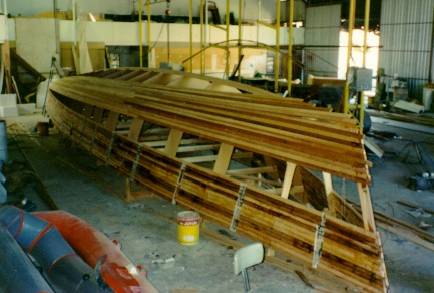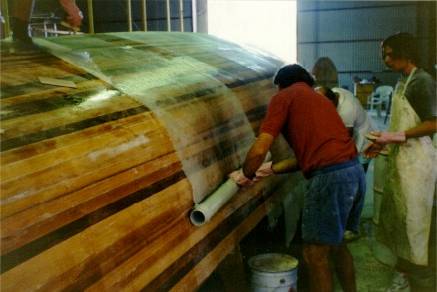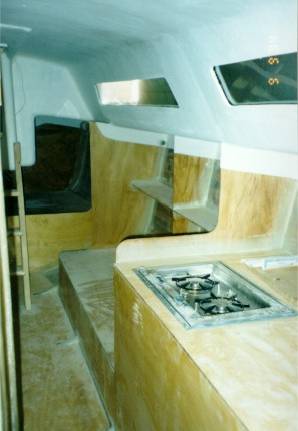


Cedar strip construction has proved to be very popular with professional and amateur boatbuilders for one-off construction because it is a quick way of establishing the shape and structure of the hull. There are a number of different design styles on the web site which use this method. They include the cruiser/racers, the performance cruising yachts and the R15.2 fast cruising yacht. All have FRP/foam sandwich decks.

The cedar thickness varies with the displacement of the yacht and the expected loads. The smaller yachts use 20mm to 22mm cedar while yachts such as the R14.8 use 28mm cedar. The construction drawings specify a good sized laminated timber backbone - especially in way of the keel and mast step where there is extra width and nearly double thickness. Fixed and lifting keels have been used.

Various weights of triaxial, biaxial and double bias materials are specified for the hull, deck and internal structure. On the outside skin there is double thickness fibreglass along the centreline where the laminates overlap. To further increase the strength, extra layers of fibreglass are specified in the slamming areas forward and around the keel and chainplate knees. The extra layers are installed before the laminated timber floors, which are also heavily fibreglassed.
The accommodation forms part of the structural strength of the yacht, and combined with the laminated timber floors, foam floors, frames, stringers and bulkheads - such as the collision and watertight bulkheads - give a strong, moderate weight construction. Integral water tanks c an also be installed. Mostly, the decks are laid up on a craftwood female mould and generally use 80kg/cu m foam with higher density foam in the load areas.